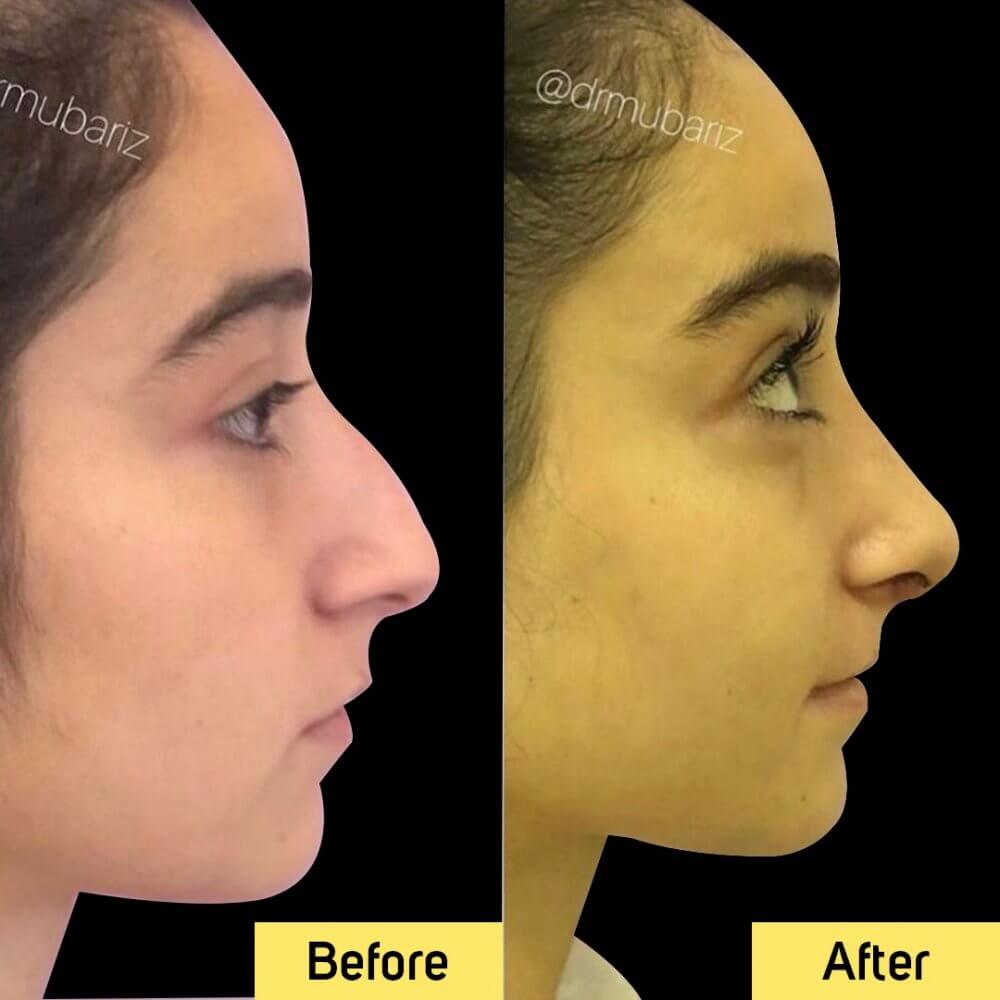Conteúdos
- Celebridades que fizeram lifting facial: a verdade por trás das transformações mais naturais de Hollywood
- Jennifer Lopez — Os segredos por trás de sua beleza eterna
- A arte da beleza intemporal — Cirurgia Plástica Dr. Mubariz em Baku e Romênia
- Cirurgia de emagrecimento da cintura sem remoção das costelas
- Cor da pele de Michael Jackson – por que mudou?
- Bella Hadid antes e depois: quais procedimentos cosméticos ela fez?
- Cicatrizes após um lifting facial profundo
- Tratamentos de lifting facial não cirúrgico: Descubra o Morpheus8
- Cirurgia labial de Kesselring
Your Ultimate Guide for International Patients
Rhinoplasty, or more commonly known as a 'nose job,' is a transformative surgical procedure that can do wonders for both the function and aesthetics of your nose. If you're considering rhinoplasty, whether for health or cosmetic reasons, this article will provide all the information you need.
Who Can Benefit from Rhinoplasty?
Are you facing issues like a deviated septum, nasal polyps, or simply unhappy with the appearance of your nose? Rhinoplasty can be the answer. It's a versatile procedure addressing concerns like congenital abnormalities, nasal tip shape, nasal hole shape, and asymmetry. The changes your surgeon can make are extensive, including resizing, angle adjustment, bridge straightening, tip reshaping, and nostril narrowing. Rhinoplasty can also correct bone and cartilage curvatures affecting breathing and resolve trauma-related issues.
Ideal Age for Rhinoplasty
The perfect age for rhinoplasty varies from person to person due to genetic factors. In most cases, patients around 18 see the completion of bone growth, making them suitable candidates. However, some individuals might continue growing until age 20, in which case surgery is deferred. Conversely, if bone growth ceases before 18, rhinoplasty is possible.
Preparing for Rhinoplasty
Ensuring your overall health and identifying any contraindications is crucial. Pre-surgery tests and examinations include general blood analysis, biochemical blood analysis, urine analysis, blood group and rhesus factor determination, tests for HIV, syphilis, hepatitis B and C, blood coagulation assessments, EKG, and fluorography. Your therapist will guide you through the process, and consultation with a specialist may be required if underlying conditions are present. An anesthesiologist will also prepare you for anesthesia.
Understanding the Costs
Rhinoplasty cost can vary based on the clinic, surgeon, and specific procedure. It's one of the most common questions asked by prospective patients.
Types of Rhinoplasty Techniques

Open Rhinoplasty
Open rhinoplasty involves a small incision under the nose, providing better visualization for the surgeon. This technique is suitable for cases requiring complete observation of bone, cartilage, and nasal muscles. The incision starts at the nose tip and extends along the septum, gradually becoming less visible over time.
Closed Rhinoplasty
Closed rhinoplasty uses incisions inside the nose, avoiding external cuts. It provides access to the nasal bones and cartilage for the surgeon. After manipulation, the incisions are sutured.
Hybrid Rhinoplasty
Hybrid rhinoplasty combines elements of open and closed techniques, preserving the nasal tip's ligament. This minimizes damage to tissues, resulting in a shorter recovery period.
Revision Rhinoplasty
Revision rhinoplasty is a complex procedure often required when the nose's anatomy changes over time. It may involve challenges like limited cartilage availability.
Profiloplasty
Profiloplasty focuses on improving the nose's aesthetics concerning the forehead, nose, lower jaw, lips, and chin's relationship. It doesn't only address nasal appearance but its overall harmony.
Septorhinoplasty
Septorhinoplasty enhances both nasal aesthetics and function, correcting the nasal septum. It's essential when a deviation, fracture, or cavity affects breathing.